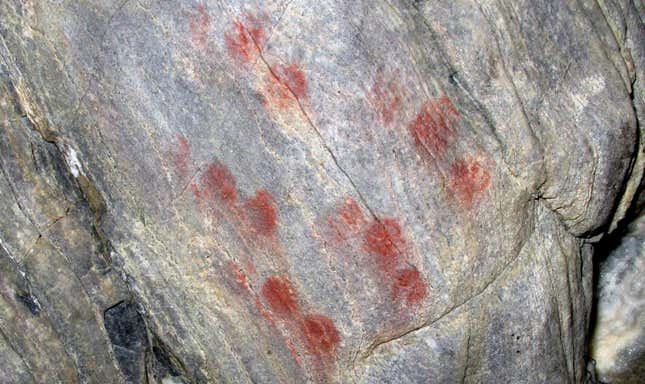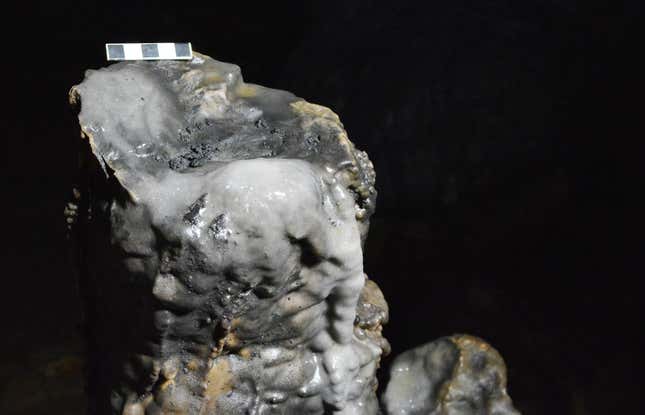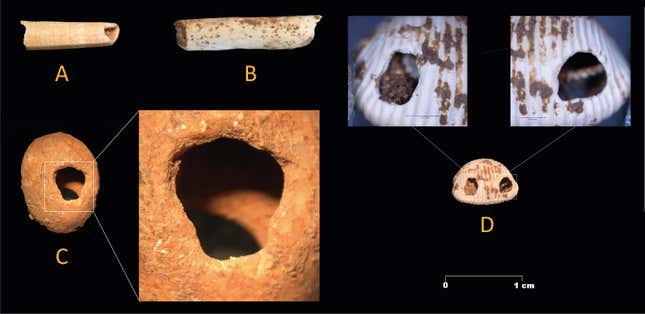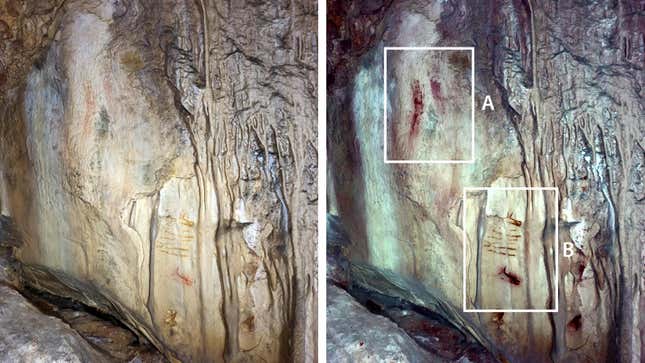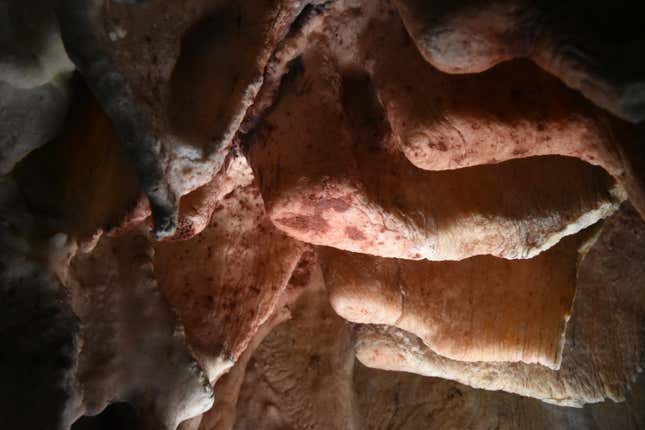
Two hundred years ago, an earthquake revealed the entrance to a large cave system in southern Spain; sealed within the dark chambers were artworks made tens of thousands of years ago by early modern humans and Neanderthals, our closest relatives. Now, excavations and scientific analyses have revealed the precise age of many of the cave’s artworks and the chronology of the system’s use.
The cave is called Cueva de Ardales, and it contains over 1,000 artworks depicting animals, humans, handprints, and abstractions. Though much of the art has been known since the cave was explored in 1821, when the works were created and by whom was unclear.
Now, a team of archaeologists and paleoanthropologists report that Neanderthals and early modern humans were responsible for the artworks, and they’ve gathered 50 radiometric dates that indicate the timing of the artmaking—and therefore the timing of the cave’s use by the two hominin groups. The team’s results are published today in PLoS One.
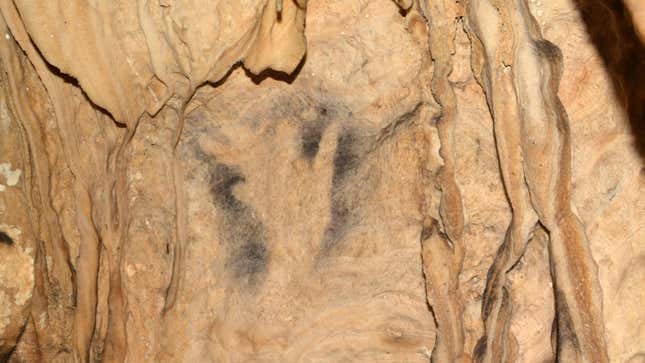
“The excavations and studies carried out in Cueva de Ardales confirm that it has been the site of repeated symbolic behavior by various human groups for more than 58,000 years,” said José Ramos-Muñoz, an archaeologist at the University of Cádiz in Spain and the study’s lead author, in an email to Gizmodo. “In the Paleolithic, first Neanderthals and then anatomically modern humans entered the cave to create rock art.”
Most of the abstract red motifs in the cave are located close to the entrance, while figurative artworks dominate the cave’s interior. The more elaborate artworks are located in the cave’s dark zone, meaning no natural light would have reached them in prehistory. Charcoal residue in the caps of stalagmites near some of the artworks indicates the stalagmites were used as stationary lamps by the ancient painters.
“Cueva de Ardales is one of three cave sites with Neanderthal Ice Age wall art in Iberia,” Gerd-Christian Weniger, a paleoanthropologist at the University Cologne in Germany and a co-author of the paper, said in an email to Gizmodo. “We are faced with the problem that only an extremely small number of representations of Ice Age wall art have been radiometrically dated at all, and chronological attribution is based on very vague stylistic features.”
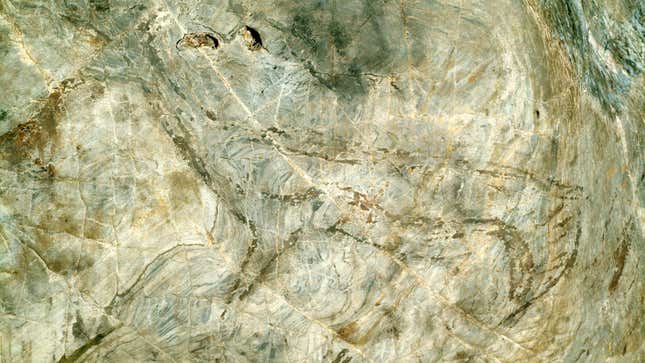
“What is very exciting is that, as far as we can tell so far, Ardales was not a classic camp site,” Weniger added. “That was not clear before the excavations.”
There’s scant evidence of domestic activities in the cave, which the researchers believe means that humans did not live there. Neanderthals lived in the entrance of the cave, but some artworks are located much deeper in the system.
While they didn’t find a hearth or anything else indicating a camp-like settlement, the research team discovered the mandible of a 12-year-old male, tooth fragments, rock cores and flakes, animal remains, and seashells—even though the Mediterranean is over 25 miles south of the site.

Interestingly, the cave was apparently visited by modern humans before the 1821 explorations made it widely known. A calcified rope fragment the researchers found on a ledge in the cave seems to be from the 1600s—meaning that, around the time Harvard University was founded, someone was spelunking in Spain, amidst the ancient artworks of our ancestors.
Weniger noted that there’s still a completely untouched system of the cave above the zone the team investigated. So, there’s plenty more to explore, and hopefully new art to discover.
